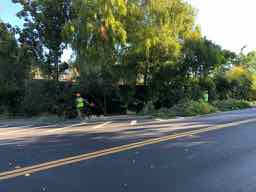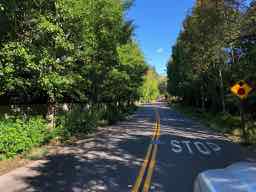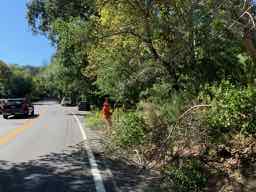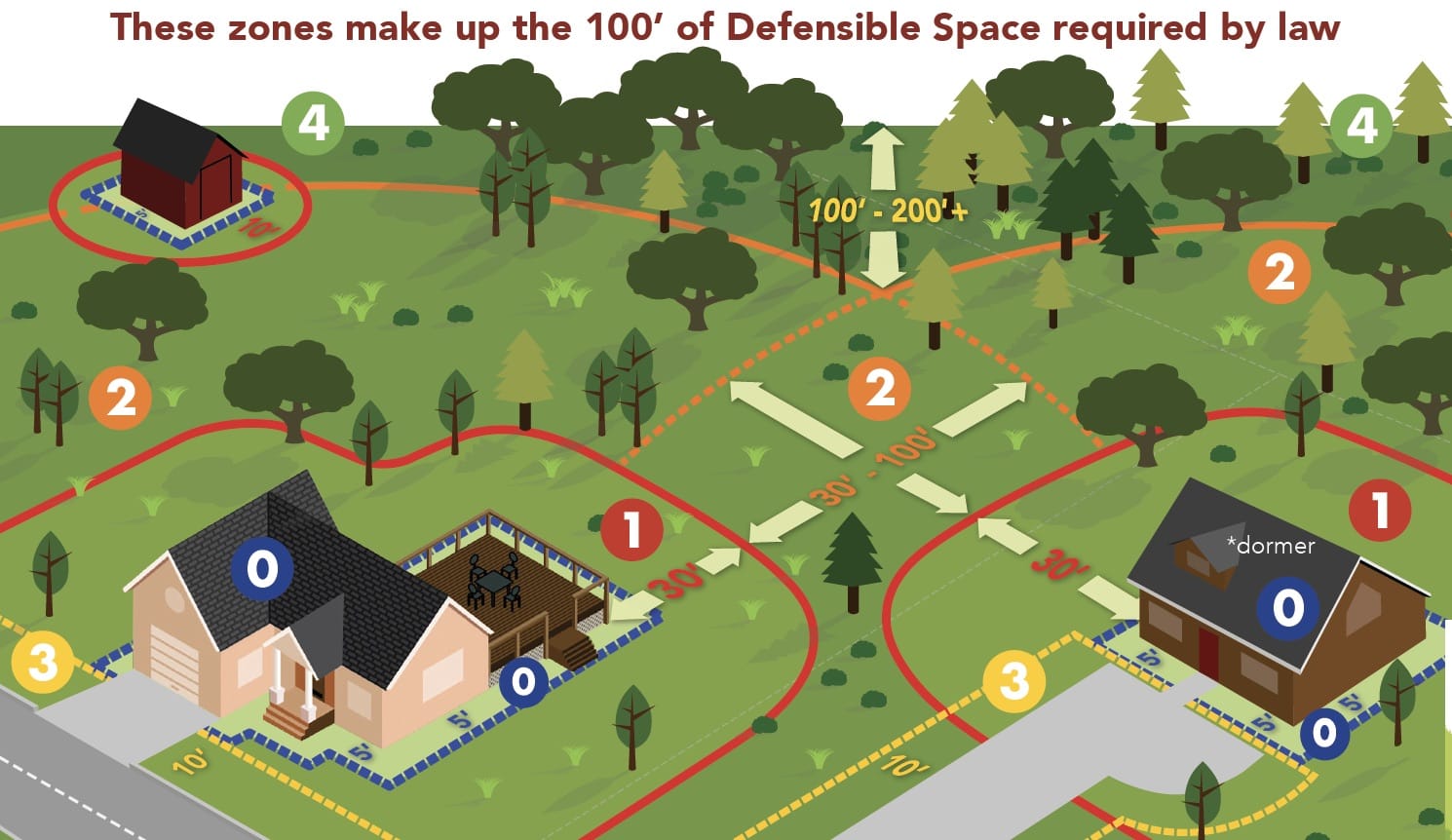
Re-Sale Inspections
RE-SALE INSPECTION FAQ’S
The Kentfield Fire District does not currently have a dedicated Home Re-sale Inspection Program for properties located outside High or Very High Fire Severity Zones.
When properties are located within a High or Very High Fire Severity Zone, we will provide a state mandated review and evaluation that provides data that can be used during the home sale/disclosure process.
Follow these steps for more information:
STEP 1: IDENTIFY YOUR FIRE ZONE
Use this link to identify/search for AB38 resale inspection requirements throughout Marin:
https://gis.marinpublic.com/lookup/FireLookup/default.aspx
The “Marin County AB-38 Look up Tool” will provide the following data related to your home and need for inspection:
RESULT OPTION 1:
“Property is not located in High or Very High Fire Hazard Zone. You are not subject to the requirements of AB-38 and don’t need to schedule an inspection”.
Assessor Parcel Number: 073-615-21
Address: 1004 SIR FRANCIS DRAKE , KENTFIELD
Agency: Kentfield Fire Protection District
NO INSPECTION REQUIRED!
RESULT OPTION 2:
“Property is in Very High Fire Hazard Zone. To request a Defensible Space Inspection (DSI) for AB-38 compliance, please complete the AB-38 Residential Re-Sale Fire Inspection Request Form (opens new window) ”
Assessor Parcel Number: 074-191-04
Address: 21 CROWN RD , KENTFIELD
Agency: Kentfield Fire Protection District
INSPECTION REQUIRED! Click blue link in the result window that reads "AB-38 compliance, please complete the AB-38 Residential Re-Sale Fire Inspection Request Form (opens new window) " when ready to schedule your inspection.
INTERESTED IN READING MORE ABOUT ASSEMBLY BILL 38?
Here’s a link to AB-38, read §1102.6f (a) which includes requirements for disclosures in High or Very High Fire Severity Zones. https://leginfo.legislature.ca.gov/faces/billTextClient.xhtml?bill_id=201920200AB38
COMMON ANSWERS TO FAQ's:
HOW DO WE GO ABOUT SCHEDULING AN INSPECTION IF REQURIED?
If the AB-38 look up tool determines you need to schedule an AB-38 Defensible Space Inspection, click this link in the results screen "AB-38 Residential Re-Sale Fire Inspection Request Form (opens new window)”
Please note: If a defensible space inspection has already been completed by our Defensible Space Inspection Team, we will provide a report based off that information. This information is also accessible to the owner by using this link: https://www.marinwildfire.org/dspace
WHEN SHOULD I SCHEDULE THE RE-SALE INSPECTION?
Submit your request as soon as possible when listing a property for sale. To comply with state and local law, you'll need a copy of the completed inspection report that shows proof the property has been inspected, and has passed that inspection. Please complete all required defensible space work outlined in previous defensible space evaluations PRIOR to submitting your request to save time and prevent delays. To view pending defensible space violations that require correction, click here https://www.marinwildfire.org/dspace
Reminder: Inspections are scheduled on a first-come first-served basis, and based on staff availability. We suggest at least a 72 hour notice for the best chance at scheduling an appointment time that works best for you.
WHAT IS THE COST OF THE RESALE INSPECTION?
There is no cost.
DOES SOMEONE NEED TO PRESENT DURING THE RE-SALE INSPECTION?
Yes, always.
WHAT IF MY PROPERTY DOES NOT PASS THE INSPECTION?
If your property does not pass on the first attempt, the inspection report will explain what work needs to be completed and you will need to schedule another appointment at a later date. Fire code compliance is required, and issues identified must be corrected within 30 days. AB-38 states that if the property will not meet compliance with vegetation management laws, codes and ordinances, the seller and the buyer shall enter into a written agreement pursuant to which the buyer agrees to obtain documentation of compliance within one year after closing escrow. This does not grant an exemption from compliance - corrections are still required within 30 days. Failure to correct issues identified during any wildfire hazard inspection may result in penalties, abatement and liens.
For any other questions, please contact Deputy Fire Marshal Larry Pasero at lpasero@kentfieldfire.org. Email is always the preferred method of communication as we spend a majority of our time in the field working with our community. Email gives us the best opportunity to respond in a timely manner.
As a reminder, our Prevention Office is open Monday through Thursday 0800-1600.
Evacuation Route Vegetation Clearance Grant
Kent Woodlands Evacuation Route Clearance Begins September 2019
Kentfield Fire Protection District has identified high hazard areas in the Kent Woodlands where improvements can be made to reduce the amount of hazardous vegetation located along PRIMARY and SECONDARY EVACUATION ROUTES. Many properties located on and around the Kent Woodlands were found to be non-compliant with fire code requirements for roadside vegetation clearance.
Kentfield Fire Protection District has partnered with FIRESafe MARIN and CAL FIRE to provide funding for the initial clearing of vegetation located along 8.73 miles of roadways, with a project budget of $130,991. Funding for this project is provided through a cooperative Fire Prevention Grant by CAL FIRE and California's Greenhouse Gas Reduction Fund. During the months of September and October, 2019, for a period of 4-6 weeks, personnel from the Fire District and FIRESafe MARIN will be working with private contractors to begin the clearing of vegetation along the roadways. Read below to learn more about this important program:
- Letter to Residents
- Fire Code
- Example Images
- Privacy Screening
- Work Calendar
- Contractors
- Project Map
Letter to Residents of Kent Woodlands: August 2019
Download the full letter in PDF format
August 2, 2019
Dear Property Owner,
Since 2015, California and the North Bay have experienced a dramatic increase in the number, frequency and intensity of catastrophic wildfires. Marin has a long history of devastating wildfires, including many in Kentfield and nearby communities.
The California Fire Code, International Wildland Urban Interface Code and Public Resources Code require that any person who owns, controls, or leases property located within a designated Wildland Urban Interface “WUI” Zone maintain 100-150 feet defensible space around structures, 14 feet of vertical clearance over roadways, and 10 feet of horizontal clearance along roadsides and driveways.
The Kentfield Fire Protection District has identified high hazard areas in Kentfield where improvements can be made to reduce the amount of hazardous vegetation located along primary and secondary evacuation routes. Many properties located within the Kent Woodlands have been found to be non-compliant and do not meet roadside vegetation clearance standards.
The Kentfield Fire Protection District has received a grant through CAL FIRE and FIRESafe MARIN to provide funding for the initial clearing of vegetation located along the roadway properties throughout the Kent Woodlands. In the months of September and October personnel from the Fire Department will be working with private contractors to begin clearing vegetation along the roadways. The work will include the following:
- Cut back or remove vegetation and tree limbs that encroach into the roadway.
- Remove low hanging tree limbs that extend over the roadway to create at least 14-16 feet of vertical clearance.
- Remove hazardous or combustible vegetation located within 10 feet (horizontally) of a roadway. Vegetation to be removed includes (but is not limited to) broom, bamboo, juniper, cypress, acacia, prida madera, and grasses (jubata/fountain/pampas).
- Remove tree limbs to 6-10 feet above ground on mature trees within 10’ of roadways.
Additional information on the program, with diagrams and specifications for the clearance work is available online at http://kentfieldfire.org/evac-2019 . If you have any questions or if we can provide any additional information, please contact Fire Inspector Larry Pasero at lpasero@kentfieldfire.org or 415-453-7464.
Respectfully,
Mark Pomi
Fire Chief, Kentfield Fire Protection District
Fire Code References
California Fire Code (Section 4907.2) and the International Wildland Urban Interface Code require that any person who owns, controls, or leases property located within a designated Wildland Urban Interface “WUI” Zone maintain 100-150 feet defensible space around structures, 14 feet of vertical clearance over roadways, and 10 feet of horizontal clearance along roadsides and driveways.
Example Images
The following are general examples of the type and structure of of vegetation that will be removed to improve evacuation routes and emergency vehicle access. Hover over the image to see the proposed vegetation clearance.
Example Images
The following are general examples of the type and structure of of vegetation that will be removed to improve evacuation routes and emergency vehicle access.
Privacy Screening
Crews will be attempt to minimize the impact to privacy screening, however residents must be aware that the presence of certain combustible screen plants may constitute a fire hazard and violation of codes and ordinances.
Kentfield Fire Protection District encourages residents to choose fire-resistant privacy screen plants, and maintain them so that they do not intrude into the public right-of-way or impede emergency vehicle ingress and egress.
See www.firesafemarin.org/plants for information on fire-resistant privacy screens and hedges.
Work Calendar
We anticipate work to begin mid-September, 2019, and last for approximately 4-6 weeks.
Contractors
Work will be performed by private tree-services and contractors.
Map
![]() Download the project overview map in PDF format.
Download the project overview map in PDF format.
Kentfield Fire Protection District and FIRESafe MARIN, under the terms of the grant, may apply funding to reduce hazardous roadside vegetation on ANY roadway in the Kent Woodlands State Responsibility Areas (SRA) where necessary to improve evacuation safety for residents.
Defensible Space
Defensible space is essential to improve your home’s chance of surviving a wildfire. It’s the buffer you create between a building on your property and the grass, trees, shrubs, or any wildland area that surround it.
Defensible space will slow or stop the spread of wildfire and protect your home from catching fire – either from direct flame contact or radiant heat. Defensible space is also important to help protect firefighters when they are defending your home.
Your home may be the most valuable investment you ever make. If you live in a high-risk fire hazard area, protect against the chance of losing that investment by creating defensible space and using fire-resistant construction materials and techniques. Creating an area of defensible space does not mean you need a ring of bare dirt around your home. Through proper planning, you can have both a beautiful landscape and a fire safe home.
Defensible Space Zones
Three zones make up the required 100 feet of defensible space. Zone Zero extends 0-5' from structures, including the building itself, and should be completely free of combustibles. Zone 1 begins 5' from your house and extends 30 feet away. The most aggressive clearance is required closest to the structure. Zone 2 lies beyond the home defense zone, extending at least 100 feet from the house or to your property line. Greater defense zone widths may be necessary if your home is on a steep slope or in a windswept exposure. The Access Zone, Zone 3, is adjacent to roads and driveways, 14' overhead and 10' from the edge of the roadway. Specific recommendations for each zone are described below.
ZONE 0 ("ZERO")
0'-5'
Zone Zero, sometimes referred to as the "Immediate Zone" is the area nearest your house, 0'-5', including the surfaces of the structure itself. There should be ZERO combustibles in this zone!
This zone extends 0'-5' from your house. It's the area closest to your house, including plants, decks, outdoor furniture, and the outside walls and coverings. This area is most vulnerable and should be more aggressively maintained for fire resistance.
- Remove combustible outdoor furniture. Replace with metal or non-combustible varieties.
- Replace jute or natural fiber doormats with heavy rubber or metal grates.
- Remove or relocate all combustible materials including garbage and recycling containers, lumber, trash, and patio accessories.
- Clean all fallen leaves and needles.
- No vegetation is recommended within 5’ of any structure.
- Remove tree limbs that extend into this zone. Fire prone tree varieties should be removed if they extend into this zone.
- Do not store firewood, lumber, or combustibles here, even (especially) under decks or overhangs. Move stored combustibles inside or at least 30’ from any structure.
- Use only inorganic, non-combustible mulches such as stone or gravel.
- Hardscaping is strongly recommended around the base of structures.
ZONE 1
5'-30'
Zone 1, sometimes referred to as the "home Ignition Zone" extends from your house's exterior walls to a distance of 30'. The "Lean, Clean, and Green" zone.
This extends 0'-30' out from buildings, structures, decks, etc, and overlaps the Home Ignition Zone described above.
- Remove all dead grasses, weeds, plants, & foliage.
- Remove all fallen leaves, needles, twigs, bark, cones, and small branches.
- Remove “Gorilla Hair” or shredded bark mulch.
- Use only compost or heavy bark mulch to maintain soil moisture, or for erosion control.
- Choose only fire resistant plants, and keep them healthy and well irrigated.
- Remove fire-prone plants.
- Provide spacing between shrubs, at least 2 times the height of the mature plant. Add space on steeper slopes.
- Trim trees to remove limbs 6’ to 10’ from the ground.
- Remove branches that overhang your roof or within 10’ of chimneys.
- Move firewood & lumber out of Zone 1, or cover in a fire resistant enclosure.
- Remove combustibles around and under decks and awnings.
- Clear vegetation around fences, sheds, outdoor furniture, play structures.
- Outbuildings and LPG storage tanks should have at least 10’ of clearance.
- Maintain regularly, focusing on the areas closest to structures.
ZONE 2
30'-100'
Zone 2 extends from 30' to at least 100' - more Defensible Space may be required based on topography, vegetation, or building construction (for example, if you live on a hill, in a drainage, or an area surrounded by unusually dense or flammable vegetation, or have a wood shake roof, as much as 150' may be required). California and local laws do not require you to create Defensible Space on property you don't own. Work with your neighbor to gain permission to clear defensible space on their property if it will help protect your home!
Extending from 30'-100' or to your property line at a minimum (you may be required to provide more clearance due to steep slopes, nearby vegetation conditions, and/or other conditions identified by the fire department). This zone should include at a minimum:
- Cut or mow annual grass down to a maximum height of 4 inches.
- Create horizontal spacing between shrubs and trees. (See diagram)
- Create vertical spacing between grass, shrubs and trees. (See diagram)
- Remove fallen leaves, needles, twigs, bark, cones, and small branches. However, they may be permitted to a depth of 3 inches if erosion control is an issue.
- Remove all piles of dead vegetation.
ZONE 3 ("ACCESS")
0'-10', horizontally, and 14' vertically, from roads and driveways
Zone 3, the "access" zone, extends from 3' to at least 10' horizontally from the edge of roads and driveways, and 14' overhead.
Property owners are responsible for vegetation adjacent to roads and driveways. Access roads are critical for evacuation and first responder access. Maintenance is required year-round.
- Property owners are responsible for vegetation adjacent to roads and driveways. Clear vegetation 14’ overhead and 10’ from sides of roads and driveways in the same manner as Defensible Space Zone 1.
- Maintain 12’ of unobstructed pavement for passage of vehicles.
- Within this zone, plantings shall be fire resistant and must not extend into the roadway.
- 14’ of clearance is required above the roadway for emergency vehicle access.
- Address numbers must be clearly visible from the road, with at least 4” numbers on a contrasting background. Reflective or lighted numbers are best.
- Create vertical spacing between shrubs, and lower tree limbs. Cut all grasses.
ZONE 4 ("COMMUNITY")
100'-200'+
Work with your neighbors
Many homes do not have 100’ of space between structures and parcel lines. Property owners are required to maintain defensible space to their property line. Work with neighbors to help provide defensible space for their homes, and ask neighbors for help if their property threatens yours. In most cases, the most effective solution is a cooperative approach between neighbors.
Remember that the most important zone is closest to your structures - from zero to five feet. If you’ve taken all of the steps outlined here and worked to “harden” your home, neighboring properties typically present only a minimal risk.
Work with neighbors or land managers to reduce fuel on nearby properties or create fuel breaks to help reduce the risk to your community. Contact Kentfield Fire District for help organizing your neighbors to create a Firewise USA© site.
Fire Codes, Standards and Fees
Please contact the Fire Prevention Bureau at (415) 453-7464 or lpasero@kentfieldfire.org for current code and standard information.
Builders, architects, and homeowners can reference the linked PDF Fire Standards for information on conforming to the adopted fire codes and standards of the Kentfield Fire Protection District.
Fire prevention is a team effort between the Kentfield Fire Protection District Fire Prevention Bureau, Staff Firefighters, Volunteer Firefighters and the members of our community. We are dedicated to the protection of life and property for all.
Through extensive plan checks and inspections, the Kentfield Fire Protection District strives to ensure fire safety in the home and businesses. Building standards, regulations, and plan check fees can be easily accessed through our website. During the warm summer months, vegetation fuel reduction inspections are conducted on vacant lots and home properties to ensure compliance with the defensible 100 feet space requirements. Your adherence to all these fire prevention standards in and around your home enables our Firefighters to provide the best possible protection to you and your family in the event of fire.
For a list of current fees (adopted and updated 4/2024) click here
Defensible Space Inspections
What is Defensible Space?
Defensible Space is the buffer around a home or structure that helps protect from heat, flames, and embers during a wildfire. By maintaining vegetation and combustibles in this area, property owners reduce the likelihood that their home will ignite during a fire. Maintaining Defensible Space for 30-100' around all structures is REQUIRED BY LAW for all homes in Marin's (and California's) Wildland Urban Interface (WUI).
Defensible space will slow or stop the spread of wildfire and help protect your home from catching fire – either from direct flame contact or radiant heat. Defensible space is also important to help protect firefighters when they are defending your home.
Your home may be the most valuable investment you ever make. If you live in the WUI, protect against the chance of losing that investment by creating defensible space and using fire-resistant construction materials and techniques. Creating an area of defensible space does not mean you need a ring of bare dirt around your home. Through proper planning, you can have both a beautiful landscape and a fire resistant home.
Defensible Space Inspections in Kentfield
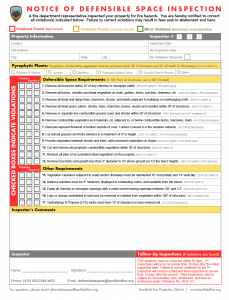
Please visit our homepage by clicking here for more information regarding this year's inspction program.
FAQS
VIOLATION CATEGORIES
Inspectors check boxes to indicate violations observed during inspections. Please select any boxes that were checked on the Hazard Notice left at your home to learn more about how to correct the violation.
- Remove all branches within 10’ of any chimney or stovepipe outlet.
- Remove all leaves, needles and dead vegetation on roofs, gutters, decks, porches, stairways, etc.
- Remove all dead and dying trees, branches, shrubs, and plants adjacent to buildings or overhanging roofs.
- Remove all dead grass, plants, shrubs, trees, branches, leaves, weeds and needles within 30’ of structures.
- Remove or separate live combustible ground cover and shrubs within 30’ of structures.
- Remove combustible vegetation and materials, on, adjacent to, or below combustible decks, balconies, stairs.
- Relocate exposed firewood or lumber outside of zone 1 unless covered in a fire resistive material.
- Cut annual grasses and forbs (weeds) to a maximum of 4” in height.
- Provide separation between shrubs and trees, with increased separation on slopes.
- Cut and remove all pyrophytic combustible vegetation within 30’ of structures.
- Remove all piles of accumulated dead vegetation on the property.
- Remove tree limbs and growth less than 3” diameter to 10’ above ground (or 1/3 the tree's height).
- Vegetation clearance adjacent to roads and/or driveways must be maintained 10’ horizontally and 14’ vertically.
- Address numbers must be 4” minimum, displayed in contrasting colors, and readable from the street.
- Equip all chimney or stovepipe openings with a metal screen having openings between 3/8” and 1/2”.
- Logs or stumps embedded in soil must be removed or isolated from vegetation within 100' of structures.
- Outbuildings & Propane (LPG) tanks must have 10’ of clearance to bare mineral soil.
FIRE HAZARDOUS PLANTS |
|
Inspectors may note the presence of specific species of fire hazardous or "pyrophytic" (or "fire-prone") plants present within 30' of structures or 10' of roads and driveways on your property. Section 4907.2 of the California Fire Code, as amended and adopted by your fire agency, requires removal of pyrophytic, combustible vegetation within 30' of structures and/or 10’ of roads or driveways. See FIRESafe MARIN's list of fire-prone plants in Marin. What should I do? |
1. REMOVE ALL BRANCHES WITHIN 10’ OF ANY CHIMNEY OR STOVEPIPE OUTLET. |
|
Inspectors noted a tree limb or shrub(s) that are too close to your chimney. What should I do? Fire Code Reference |
2. REMOVE ALL LEAVES, NEEDLES AND DEAD VEGETATION ON ROOFS, GUTTERS, DECKS, PORCHES, STAIRWAYS, ETC. |
|
Inspectors observed leaves and needles on your roof or rain gutters, or on decks, porches, and outdoor stairs. This is the most significant hazard found on most homes, and is the most likely source of ignition during a wildfire. Even one handful of leaves or needles may be enough to burn your home down. What should I do? Fire Code Reference |
3. REMOVE ALL DEAD AND DYING TREES, BRANCHES, SHRUBS, AND PLANTS ADJACENT TO BUILDINGS OR OVERHANGING ROOFS. |
|
Inspectors observed dead trees, branches, shrubs or plants adjacent to a structure or overhanging a roof. This may be your home, decks, or an accessory structure like a garage, cottage, shed, or play structure. What should I do? Fire Code Reference |
4. REMOVE ALL DEAD GRASS, PLANTS, SHRUBS, TREES, BRANCHES, LEAVES, WEEDS AND NEEDLES WITHIN 30’ OF STRUCTURES. |
|
Inspectors observed dead vegetation within 30' of structures. What should I do? Fire Code Reference |
5. REMOVE OR SEPARATE LIVE COMBUSTIBLE GROUND COVER AND SHRUBS WITHIN 30’ OF STRUCTURES. |
|
Some live plants or even fire-resistant plant species can burn if they are not adequately maintained and irigated. Inspectors observed LIVE plants in a combustible state near your home. What should I do? Fire Code Reference |
6. REMOVE COMBUSTIBLE VEGETATION AND MATERIALS, ON, ADJACENT TO, OR BELOW COMBUSTIBLE DECKS, BALCONIES, STAIRS. |
|
Decks, balconies, and stairs are particularly vulnerable to ignition from flames or embers during a wildfire. They must be maintained clear of all vegetation debris and materials, including fallen leaves and needles, and combustible furniture and materials above and below. What should I do? Fire Code Reference |
7. RELOCATE EXPOSED FIREWOOD OR LUMBER OUTSIDE OF ZONE 1 UNLESS COVERED IN A FIRE RESISTIVE MATERIAL. |
|
Inspectors observed exposed firewood or lumber stored too close to structure(s). What should I do? Fire Code Reference |
8. CUT ANNUAL GRASSES AND FORBS (WEEDS) TO A MAXIMUM OF 4” IN HEIGHT. |
|
Dry grasses are a significant risk, carrying wildfires quickly and igniting readily from embers. What should I do? Use plastic string trimmers, and be sure to only use gas powered mowers in the morning when vegetation is moist and temperatures are cool. Metal bladed mowers and trimmers can spark fires. Never use outdoor power tools on a Red Flag day. Fire Code Reference |
9. PROVIDE SEPARATION BETWEEN SHRUBS AND TREES, WITH INCREASED SEPARATION ON SLOPES. |
|
Shrubs and trees that are too close together can help spread fire from plant to plant. Even fire-resistant plants should have some separation, and shrubs should not be allowed to grow below trees. What should I do? A continuous canopy of fire-resistant trees may be desireable in some cases to create shade (sometimes refrerred to as a "shaded fuel-break") which can suppress weeds and grasses, and help retain moisture. Consult with an arborist or your fire department for advice before removing shade providing trees (unless they are a fire-prone species). Fire Code Reference |
10. CUT AND REMOVE ALL FIRE HAZARDOUS COMBUSTIBLE VEGETATION WITHIN 30’ OF STRUCTURES. |
|
Inspectors observed one or more FIRE HAZARDOUS plants within 30' of structures. What should I do? Fire Code Reference |
11. REMOVE ALL PILES OF ACCUMULATED DEAD VEGETATION ON THE PROPERTY. |
|
Inspectors observed piles of accumulated dead vegetation on the property. What should I do? Fire Code Reference |
12. REMOVE TREE LIMBS AND GROWTH LESS THAN 3” DIAMETER TO 10’ ABOVE GROUND (OR 1/3 THE TREE'S HEIGHT). |
|
Tree limbs that are too close to the ground can help carry fire into the tree's canopy, even in fire-resistant species. What should I do? Fire Code Reference |
13. VEGETATION CLEARANCE ADJACENT TO ROADS AND/OR DRIVEWAYS MUST BE MAINTAINED 10’ HORIZONTALLY AND 14’ VERTICALLY. |
|
Inspectors observed unmaintained or dead vegetation adjacent to a road or driveway, or tree limbs or shrubs overhanging the roadway. Property owners are required to maintain vegetation adjacent to any road or driveway fronting their property, even in the public right-of-way between a property line and the pavement's edge. What should I do? Fire Code Reference |
14. ADDRESS NUMBERS MUST BE 4” MINIMUM, DISPLAYED IN CONTRASTING COLORS, AND READABLE FROM THE STREET. |
|
Inspectors did not see an address number, or your address number is not adequately visible. What should I do? Fire Code Reference |
15. EQUIP ALL CHIMNEY OR STOVEPIPE OPENINGS WITH A METAL SCREEN HAVING OPENINGS BETWEEN 3/8” AND 1/2”. |
|
Inspectors observed chimney(s) without a spark arrestor or ember screen. What should I do? Fire Code Reference |
16. LOGS OR STUMPS EMBEDDED IN SOIL MUST BE REMOVED OR ISOLATED FROM VEGETATION WITHIN 100' OF STRUCTURES. |
|
Inspectors observed logs or stumps that might ignite during a wildfire. What should I do? Fire Code Reference |
17. OUTBUILDINGS & PROPANE (LPG) TANKS MUST HAVE 10’ OF CLEARANCE TO BARE MINERAL SOIL. |
|
Inspectors observed vegetation or combustibles adjacent to a propane tank. What should I do? Fire Code Reference |
INSPECTOR'S COMMENTS |
|
Inpsectors may leave comments, additional requirements, or helpful descriptions here. What should I do? |
FREQUENTLY ASKED QUESTIONS
Why did you inspect my property?
Kentfield Fire Protection District has conducted annual hazard inspections for at least 40 years. These inspections help ensure compliance with the laws (Section 4290 and 4291 of the CA Public Resources Code) and contribute to the overall safety of Kentfield and neighboring communities.
Why didn't you notify me that you'd be inspection my property in advance?
We did! In April, Kentfield Fire Protection District mailed a full color, 4 page brochure outlining the requirements and inspection program to all Kentfield residents living in the Wildland Urban Interface (WUI).
Why didn't you inspect my neighbor's property?
We did! All properties are inspected annually. Your neighbor received a notice, too, and we'll follow up to ensure all neighbors comply. If you see a hazard, or think we missed something, please email us.
What right do you have to inspect my property?
The California Fire Code and Public Resources Code grant the authority for the Fire Chief or authorized Fire Code Official to conduct inspections for compliance with the various applicable codes.
The inspectors do not enter a property without permission. They are trained to walk up to a front door (through an unlocked front gate at the street, if present, under rules of curtilage), and knock to introduce themselves. If no adult is present, they have two options: 1) inspect the property as visible from the front door or public areas such as from the front pathway or roadway, or 2) come back later. Under no circumstances do the inspectors enter locked or gated areas of a property without permission of a resident or landowner, and they don't "peek" over fences. They only inspect areas that are plainly visible from a common area unless an adult resident gives permission to gated areas.
What are the exact laws I'm required to comply with?
- Section 4290 and 4291 of the CA Public Resources Code
- California Fire Code 4907.1, 4907.2, 4907.3
What happens if I am unable to, or refuse to, comply?
- Section 4907.4 of the CA Fire Code outlines the process to abate hazards if a property owner fails to comly. Your fire department would prefer to work with your to help you crete a safe space around your home, so please contact us for assistance if you are unable to comply.
What is a FIRE HAZARDOUS plant species?
Plants that ignite readily and burn intensely (pyro-phases) typically share certain characteristics:
- They are usually blade-leaf or needle-leaf evergreens.
- They have stiff, woody, small or fine, lacey leaves.
- Their leaves and wood usually contain volatile waxes, fats, terpenes or oils (crushed leaves have strong odors).
- Their sap is usually gummy, resinous and has a strong odor.
- They usually contain plentiful fine, twiggy, dry or dead materials.
- They may have pubescent (hair covered) leaves.
- They may have loose or papery bark.
- These plants flame (not smolder) when preheated and ignited with a match.
FLAMMABILITY & CONDITION
The condition of the plant is as important as its species. Even some "pyrophytic" species can be quite fire-resistant if properly maintained. Depending on its growth form and access to water, the same species may be fire resistant in one envi-ronment and pyrophytic in another. Water-stressed plants that are in poor condition are more pyrophytic. A pyrophytic species becomes explosively flamma-ble when poorly maintained. South-facing slopes, windy areas, sites with poor soils and urban landscapes are more stressful for plants.
PYROPHYTIC VEGETATION TYPES:
- Grasses: Any cured (dry) grass. Nonirrigated, annual grasses are typically more flammable than perennial grasses. Irrigated grasses are fire resistant.
- Herbs: Any cured herb.
- Ferns: Any dry or cured fern, particularly cured bracken and sword fems.
- Brush: Any brush with excessive deadwood. Any over-mature, dying or dead brush.
- Trees: Any forest, stand or urban forest that is over-dense, under stress or over mature.
What else can I do to protect my home?
- Hardening your home is just as important as Defensible Space. See www.firesafemarin.org/hardening-your-home for info.
- See lots of other helpful tips at www.firesafemarin.org
What should I do if I received a violation notice?
Correct the issues noted - check www.firesafemarin.org/defensible-space for tips on complying with the law and creating Defensible Space. If you need additional time, email defensiblespace@kentfieldfire.org. If you have specific questions about the violation notice, feel free to email defensiblespace@kentfieldfire.org.
Why are the inspectors wearing Marin County Fire Department uniforms?
In order to complete all inspections in a timely manner, Kentfield Fire Protection District cooperates with Marin County Fire Department (MCFD). They provide a team of trained inspectors, who under the authority of the Fire Chief, inspect properties for compliance with the CA Fire Code Section 4907.2, 4907.3, and Public Resource Code (PRC 4291).





